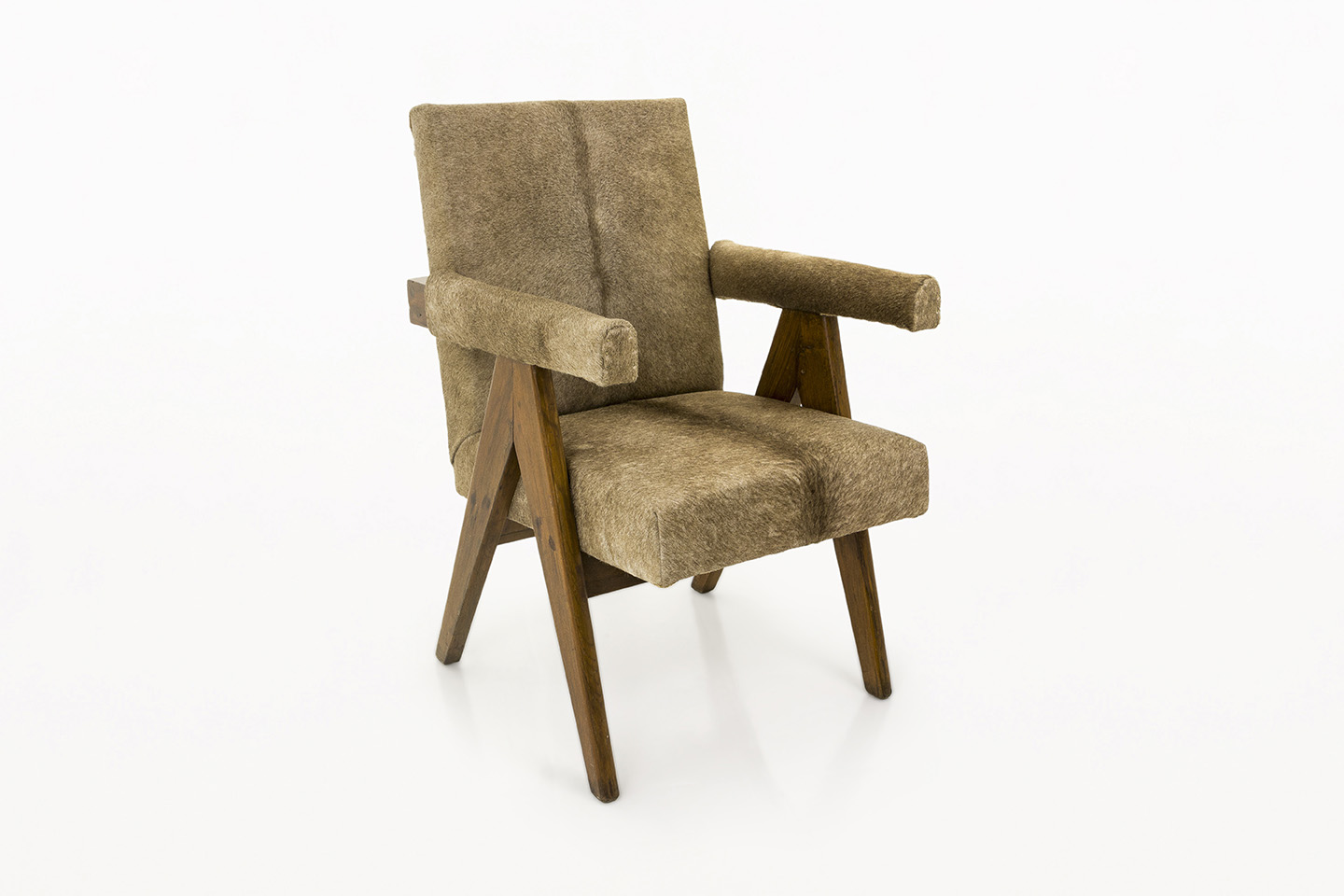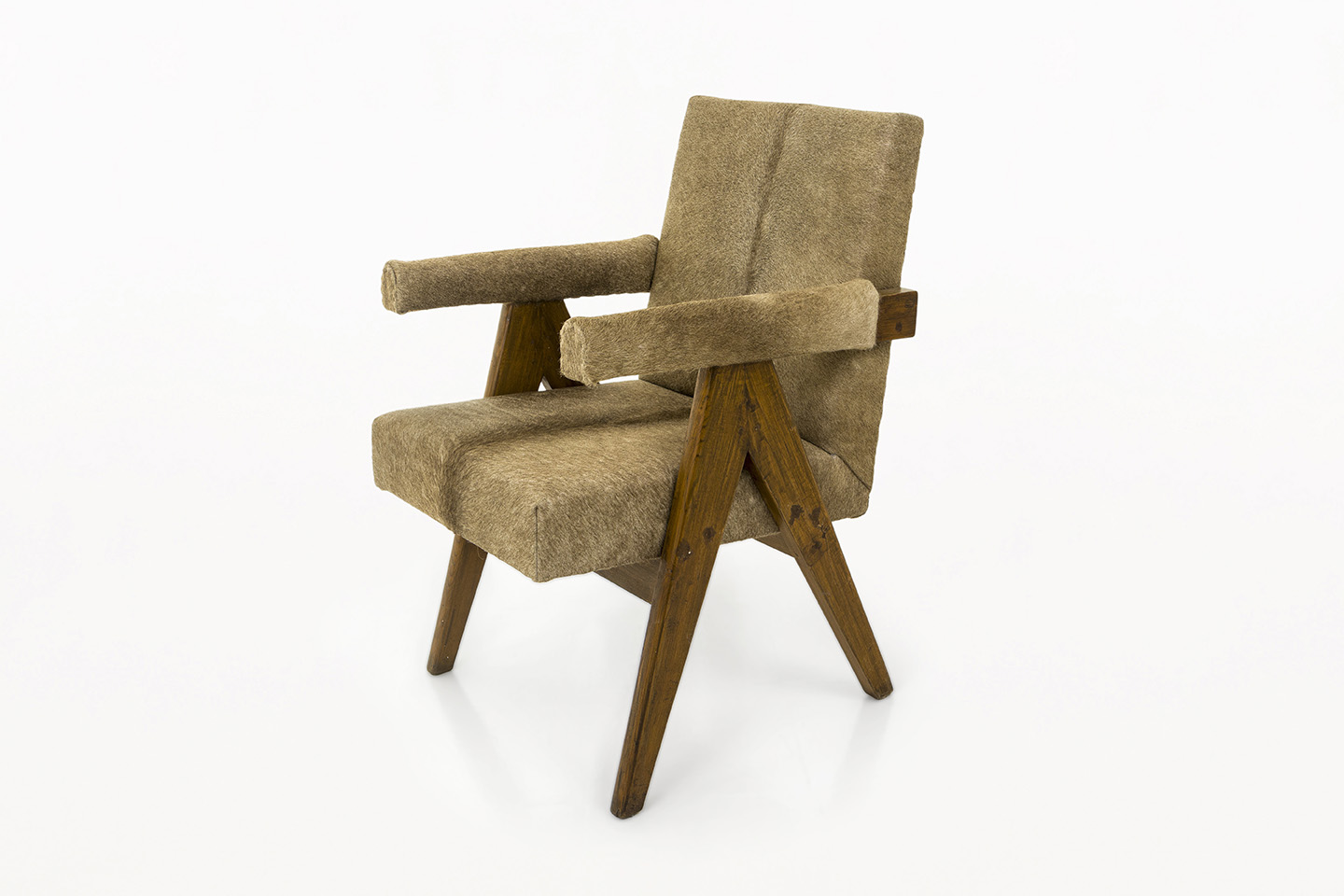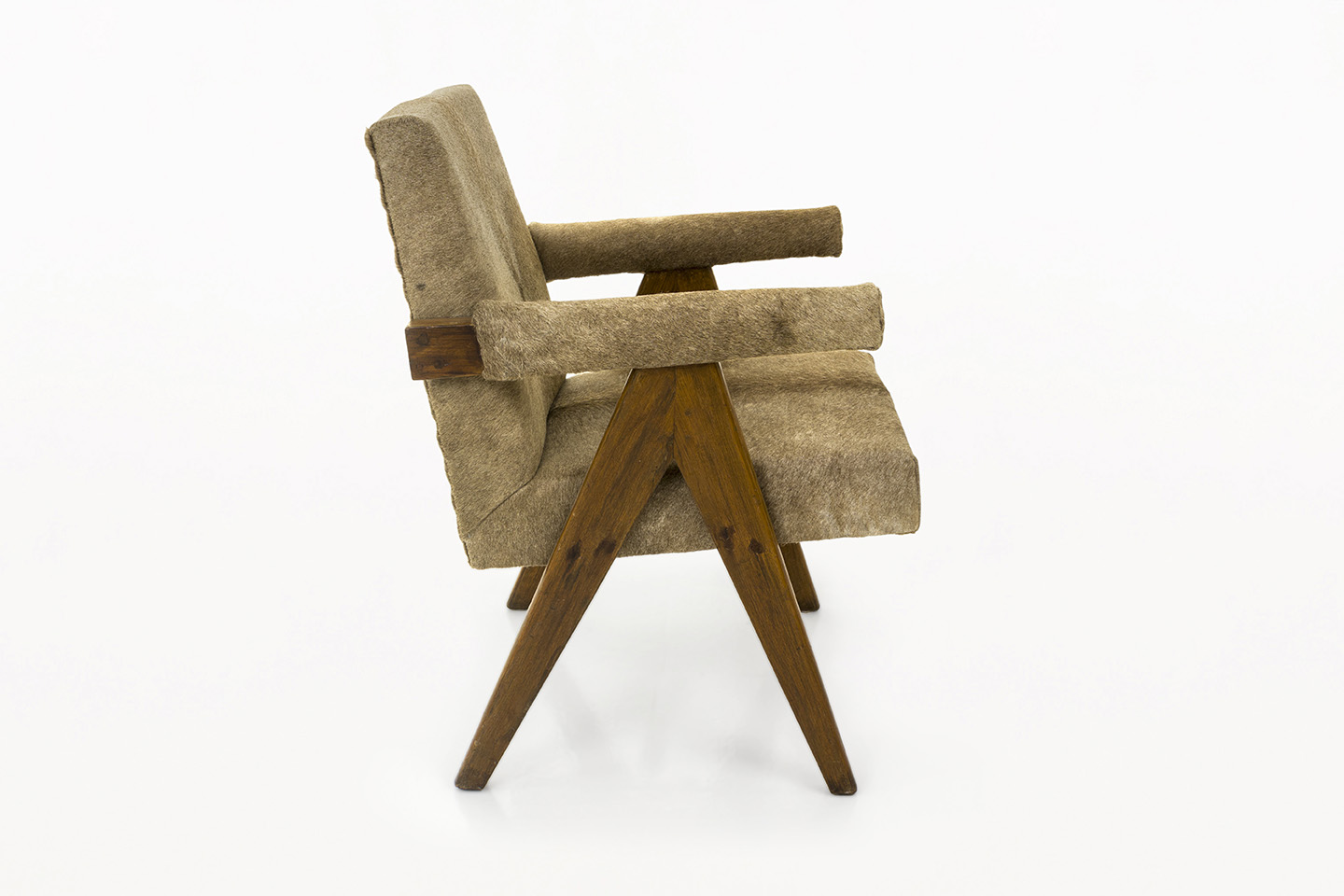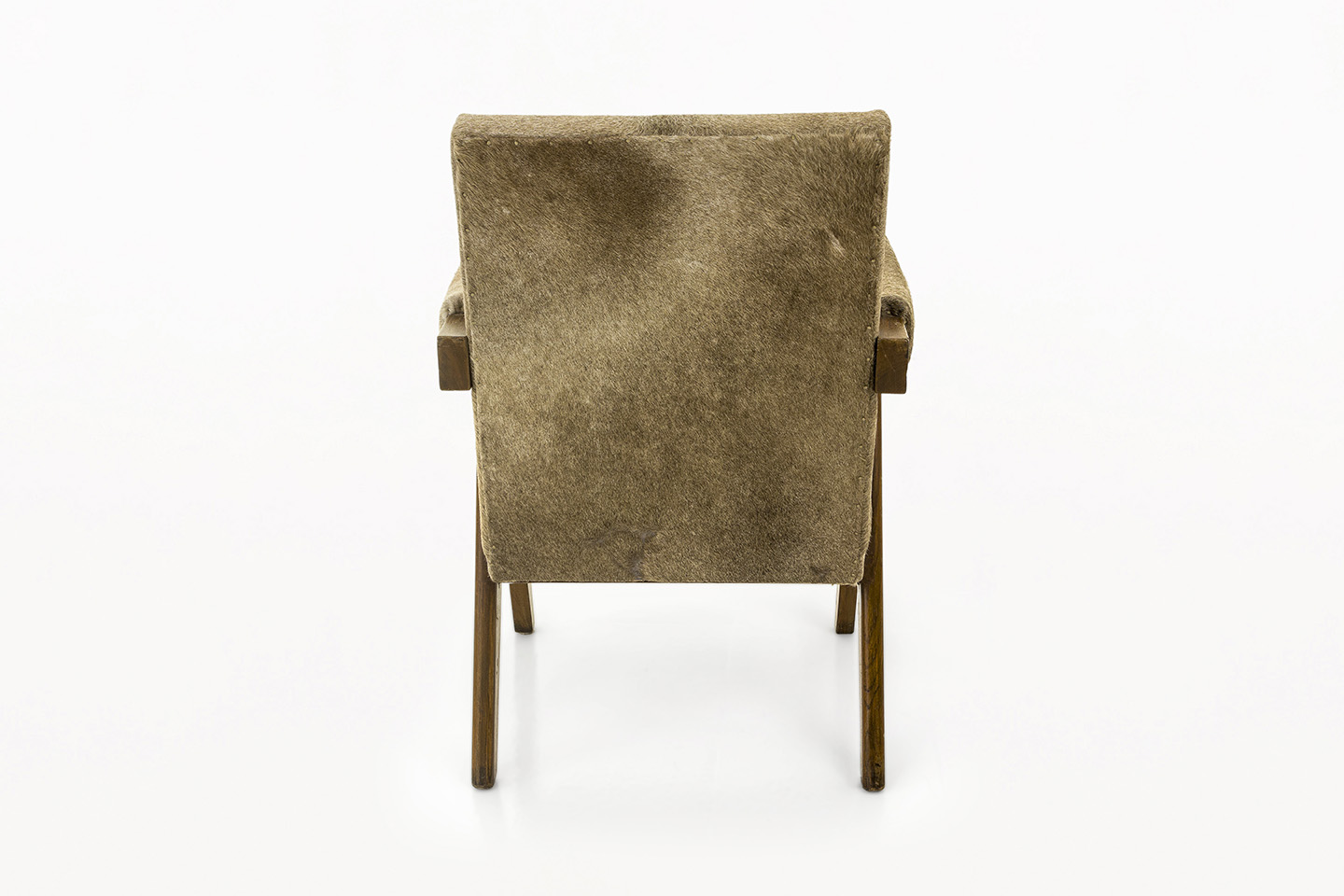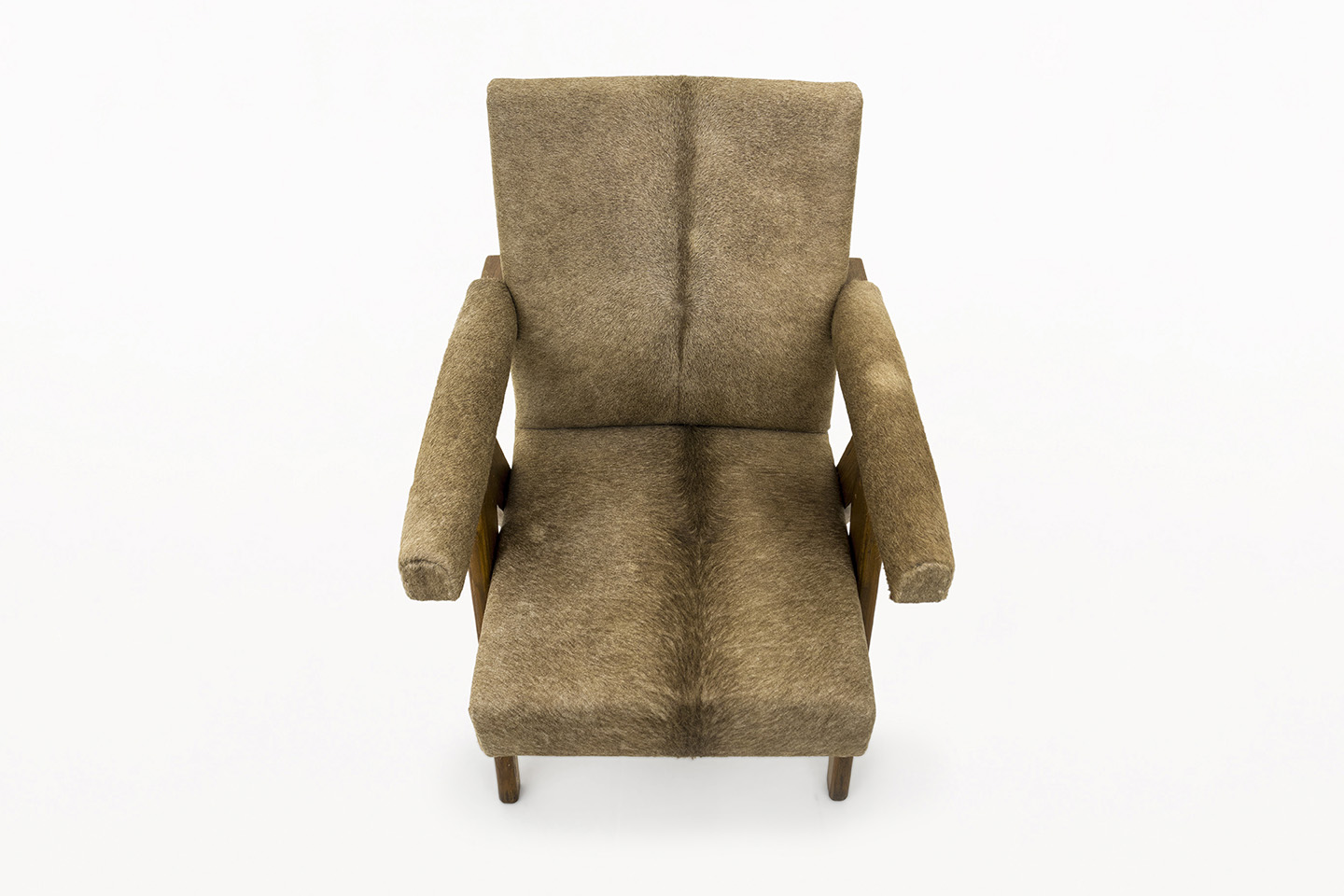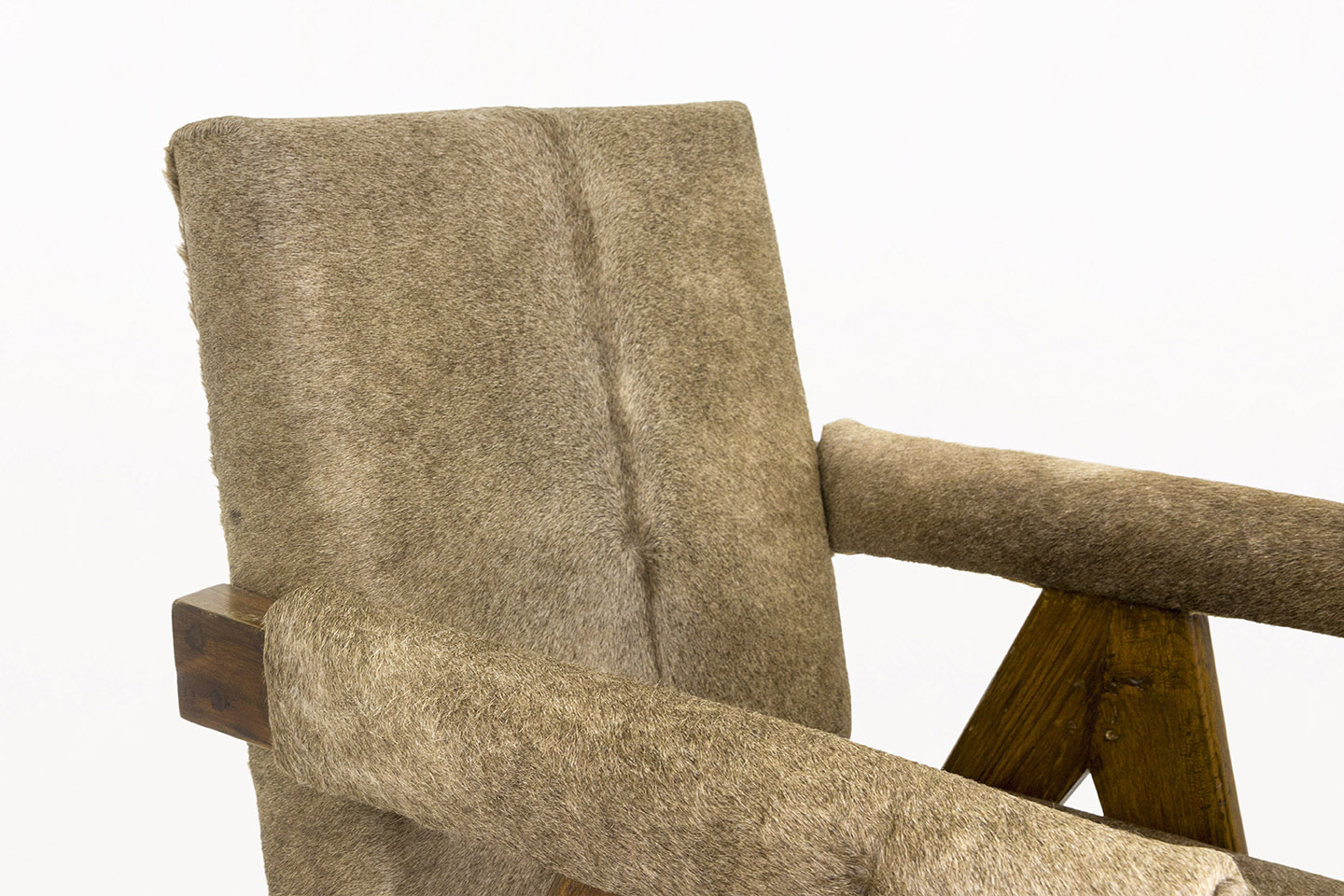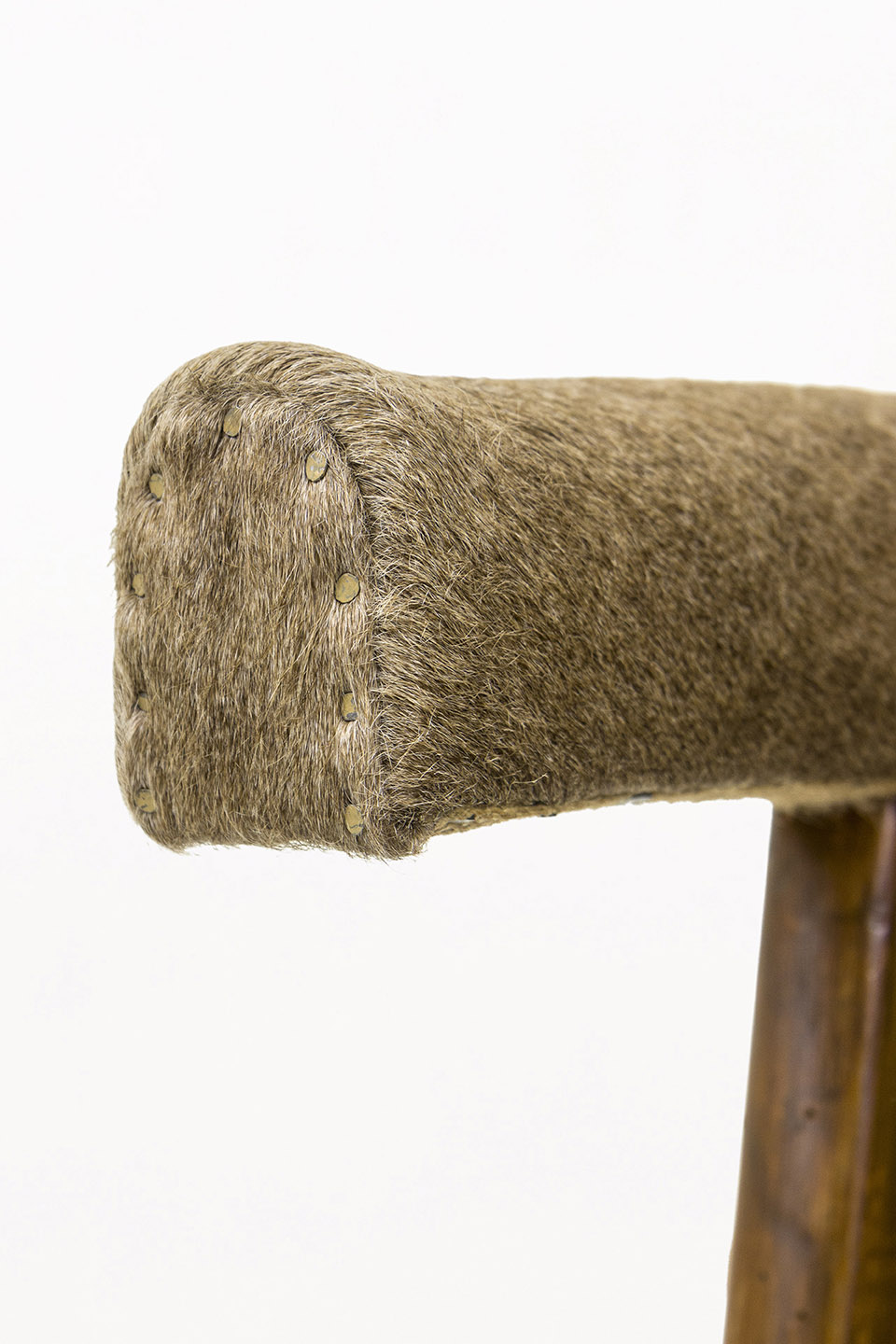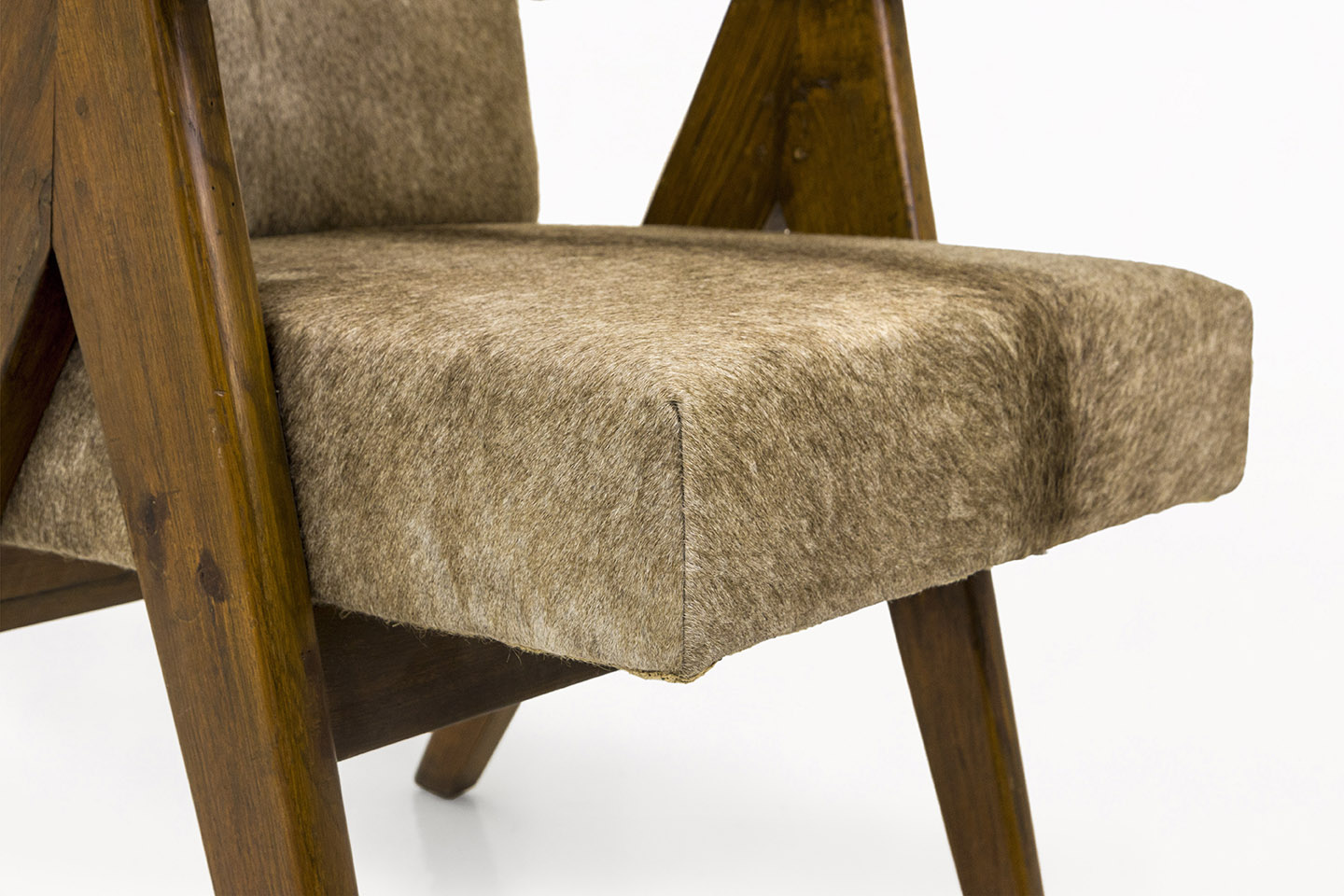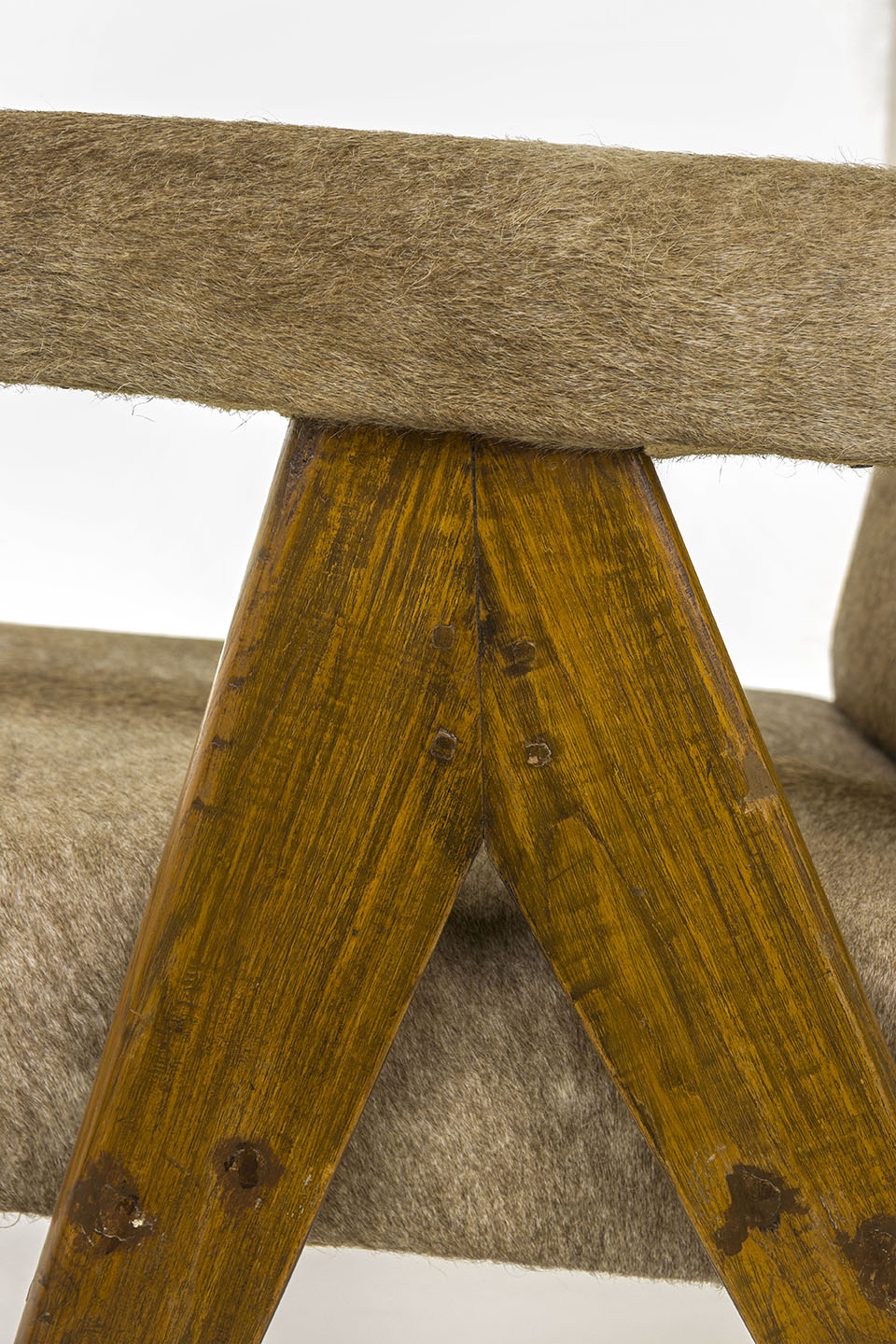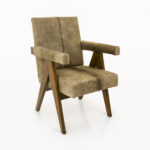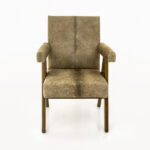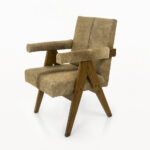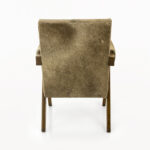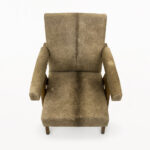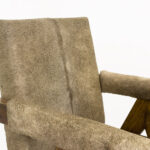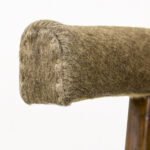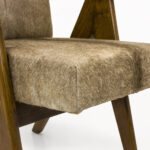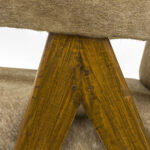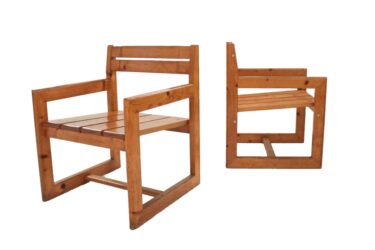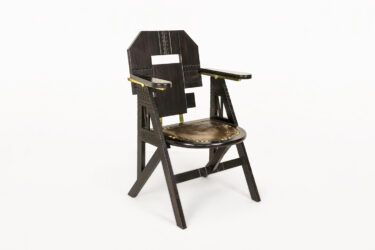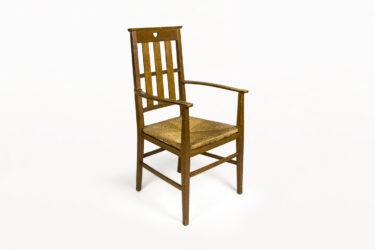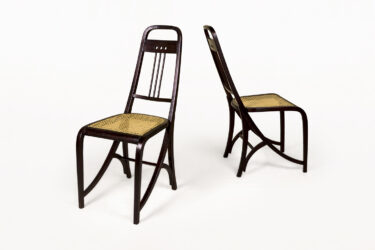Pierre Jeanneret , Committee Chair for Chandigarh, PJ-SI-30-C, Circa 1950, India
DESCRIPTION: Pierre Jeanneret , Committee Chair for Chandigarh, PJ-SI-30-C, Circa 1950, India
“PJ-SI-30-C” Committee Chair for Chandigarh.
Teak structure, upholstered with fur.
CONDITION: Good condition. Wear consistent with age and use.
DIMENSIONS: Height: 88cm (35in) Width: 59cm (23in) Depth: 69cm (27in) Seat Height: 46cm (18in).
ABOUT THE DESIGNER: Jeanneret studied at the École des Beaux-Arts in Geneva and after he graduated in 1921 he became a partner in Le Corbusier’s office in Paris. The pair collaborated on numerous residential projects, most notably the Villa Savoye, the iconic modernist house in suburban Paris completed in 1931. Jeanneret also worked with the great Charlotte Perriand on the Grand Modele line of tubular metal furnishings that was a sensation at the annual Salon d’Automne design expo in 1929. A rift developed between Jeanneret and his cousin during World War II, as the former joined the French resistance, while Le Corbusier cooperated with the occupying authorities in Vichy. The two did not work together again until 1950, when Le Corbusier persuaded Jeanneret to help execute the master plan for the new city of Chandigarh in Punjab, India. Jeanneret lived and worked there until the final years of his life. A hallmark of Jeanneret’s furniture designs is his great sensitivity to materials. In contrast to the tubular-steel chairs produced by Marcel Breuer and other members of the Bauhaus, the chromed metal pieces designed by Jeanneret and Perriand — including such as the now-classic LC4 chaise longue and the Grand Confort lounge chair — have a sensuous, relaxed and welcoming look. Conversely, while Jeanneret uses essentially geometric forms for his wooden seating pieces, they exude warmth by nature of the material. One of Jeanneret’s first manufactured designs in wood is the Model 92 Scissors chair, licensed by Hans and Florence Knoll when they were touring postwar France. But Jeanneret’s finest work in furniture was done in Chandigarh, and these are the pieces that have earned him recent renown. Crafted of teak, the Chandigarh designs range from low-slung lounge chairs and armchairs with cane seats to desks and tables, most with Jeanneret’s signature drafting compass-shaped legs. Many such pieces on the market today are refurbished, having been found by dealers languishing in scrapyards in India in the late 1990s. Chandigarh is now taking better care of its modernist heritage, making available Jeanneret works all the rarer.
ABOUT THE STYLE: The chair has a strong silhouette which is conceived in sharp geometry of its elements. Its powerful presence exudes a regal energy akin to that of a throne, conveying a sense of strength and firmness. All massive wood parts are authentic. They are done in Indian teak. Rich in texture, the wood is vivid and comes in chocolate colour. The surface is treated with shellac and there are several layers of original shellac. It provides smooth irregular gloss different from that of the sterile lacquerware nowadays. Charming irregularities show that each piece is unique. Chandigarh items are famous for A-shaped legs. Many desks, chairs, armchairs, and sideboards have these legs, so the pieces remind us of sturdy structural constructions, such as bridge pillars that carry their weight, or some of Le Corbusier’s buildings. The A-shaped legs have sharper corners and are strict and sturdy in their geometry. Their angle and position show that Pierre Jeanneret, together with Jean Prouvé and Le Corbusier, had a structural, not decorative, expression. The upholstery is redone in a traditional way. As foam was used for the original seat, we upholstered it accordingly. Unlike the initial upholstery of Chandigarh items in skai, this has been redone in high-end cow hides in teal colour. I think the piece blends well with many interior styles. It can support pure, modern aesthetics by giving them an inviting, though sharp, touch. As a chair, it is usable for dining and working, supporting the back nicely. The upholstered pieces offer comfort in a joyful manner, while firmly framing the occupant within. P! Galerie’s selection is mainly focused on rare French mid-century modern design artefacts by Pierre Jeanneret, Jean Prouvé, Le Corbusier, and Charlotte Perriand. Artefacts from our carefully curated collection are handpicked, and all traces and important indicators of authenticity are evaluated professionally. We try to preserve as much of patina as possible during the process of restoration, as it defines these historic pieces. Each object comes with a certificate of authenticity, offering you the opportunity to own a valuable artefact originating from a UNESCO-designated World Heritage Site. Not only do we cooperate with museums and offer auction houses our services and expert opinion, we also look forward to welcoming you as a private collector and connoisseur.

